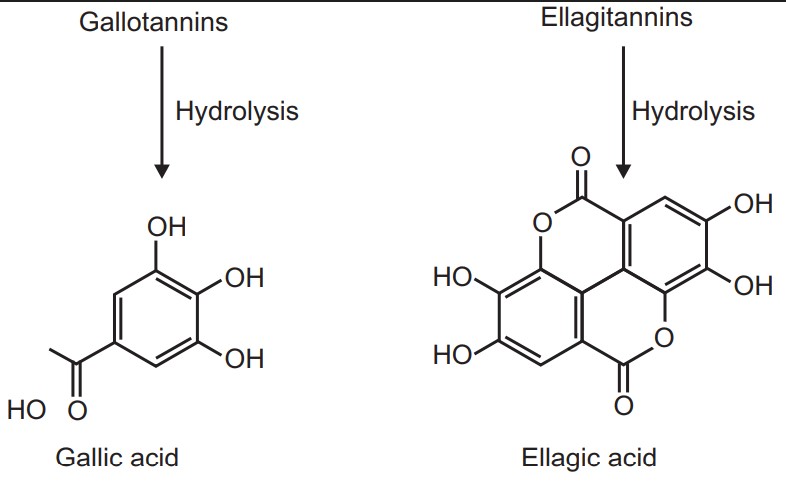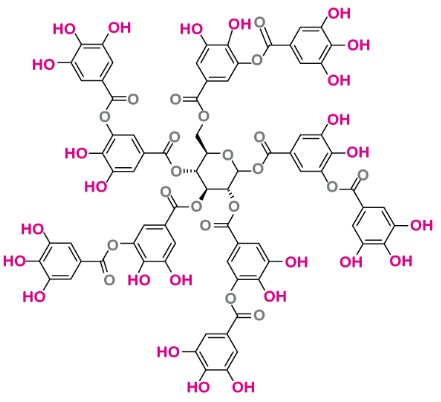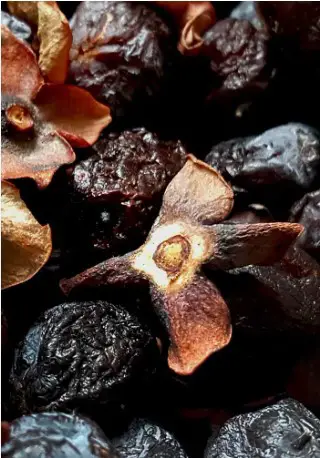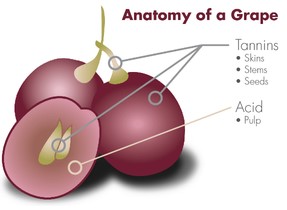Tannins and tannic acid, often spoken about in the same breath, are pivotal compounds with wide-ranging impacts across various industries, from winemaking to leather manufacturing. Despite their common association, these compounds possess distinct characteristics and functions. This distinction is not merely academic; it has practical implications for consumers, manufacturers, and hobbyists alike, affecting everything from the taste of your wine to the durability of leather goods.
Tannins are naturally occurring compounds found in many plants, acting as a defense mechanism against predation. They are responsible for the astringent taste in foods and beverages like wine and tea. Tannic acid, a specific type of tannin, is used industrially for its properties in the dyeing and tanning industries. Although both are tannins, the key difference lies in their chemical structure and applications: tannins are a broad class of compounds, while tannic acid refers to a particular type with specific uses.
The significance of understanding the differences between tannins and tannic acid cannot be overstated. These compounds not only play a critical role in the taste and texture of foods and beverages but also in the manufacturing processes of various products. For instance, the astringency of wine is attributed to tannins, while tannic acid’s ability to bind with proteins is utilized in the leather tanning industry. This intricate dance of chemistry and application underscores the importance of both substances in our daily lives and industrial processes.

Tannins Explained
What Are Tannins?
Tannins are natural compounds found across various plant species. They play a pivotal role in plant defense against predators and contribute to the plant’s growth and healing processes. Structurally, tannins are polyphenolic molecules, capable of binding and precipitating proteins. This unique ability affects the taste and texture of plant-based foods and beverages.
There are mainly two types of tannins: hydrolyzable tannins and condensed tannins. Hydrolyzable tannins are known for their simpler structure and can be broken down into sugar and phenolic acids. On the other hand, condensed tannins, also known as proanthocyanidins, are more complex and do not easily break down.
Tannins are abundant in nature, found in tree barks, leaves, nuts, seeds, and fruits. For example, the astringency from biting into a raw persimmon or the dryness in your mouth after drinking red wine are both due to tannins. They play an essential role in nature, providing protection to plants by deterring herbivores with their bitter taste.
Tannins in Everyday Life
Tannins permeate our daily lives through foods, beverages, and consumer products, influencing their taste, color, and nutritional profiles.
- In foods, tannins are present in fruits like grapes, strawberries, and blueberries, adding to their flavor complexity. They are also found in nuts, spices, and even chocolate, contributing to the bitterness and astringency of these foods.
- Beverages, especially wine, owe much of their character to tannins. They contribute to the wine’s body, color, and taste. Tannins act as natural antioxidants, which can benefit the wine’s aging process, adding depth and complexity to its flavor over time.
- Beyond edibles, tannins are used in consumer products such as herbal teas and certain types of natural dyes. The tannins in tea leaves give each blend its unique astringency level, impacting the beverage’s final taste profile.
The impact of tannins on taste and color is significant. They can transform the palate sensation and hue of foods and drinks, from adding bitterness and astringency to deepening colors. Moreover, tannins possess antioxidant properties, which contribute to the nutritional value of tannin-rich foods, supporting heart health and reducing inflammation.
Tannic Acid Overview
Defining Tannic Acid
Tannic acid is a specific type of hydrolyzable tannin with a detailed chemical structure, distinct from the broad category of tannins. It is often extracted from the nutgalls formed by insects on trees or from the bark of certain trees. Tannic acid’s structure allows it to bind easily with proteins, which is why it is highly valued in industrial applications.
Unlike the broader class of tannins, tannic acid has a well-defined use in the industrial world, primarily due to its protein-binding capabilities. It’s these properties that make tannic acid an invaluable resource in industries like leather tanning and dyeing.
Uses of Tannic Acid
Tannic acid finds its applications in a variety of sectors:
- Leather tanning: Tannic acid transforms animal hides into leather, making them durable and resistant to decay.
- Dyeing processes: It is used as a mordant in dyeing cotton, creating vibrant and long-lasting colors.
- Beverage industry: As a clarifying agent, tannic acid helps to remove proteins that can cause haze in beers and wines.
- Medicinal: Due to its astringent properties, tannic acid is used in some ointments and creams for treating burns and reducing inflammation.
Key Differences
Chemical Composition
While tannins represent a broad class of compounds, tannic acid refers to a specific type with a unique chemical structure. Tannins vary widely in their composition, encompassing a range of complex polyphenolic compounds. In contrast, tannic acid has a defined molecular structure, making it a subset of hydrolyzable tannins with specific characteristics and applications.
Sources and Extraction
The sources and extraction methods for tannins and tannic acid also differ significantly. Tannins are naturally occurring in a wide variety of plants and can be extracted from different parts such as leaves, bark, or fruit skins. Tannic acid, however, is usually extracted from specific sources like nutgalls or oak bark, utilizing a more targeted extraction process to isolate the desired compound.
Applications and Effects
The applications and effects of tannins and tannic acid vary across different industries:
- In the food and beverage industry, tannins enhance flavor, color, and stability of products, while tannic acid is specifically used for its clarifying and preserving properties.
- Health-wise, both tannins and tannic acid offer antioxidant benefits, though their consumption needs to be balanced due to potential side effects, such as interference with iron absorption.
- In industrial applications, the binding properties of tannic acid make it particularly valuable for leather tanning and dyeing, whereas tannins, in general, are used in a broader range of products for their antioxidant and astringent qualities.

Impact on Health
Health Benefits
Tannins and tannic acid are not just compounds that impact the taste and texture of foods and beverages; they also offer significant health benefits. The antioxidant properties of tannins help neutralize harmful free radicals in the body, reducing oxidative stress and potentially lowering the risk of chronic diseases. These compounds have been studied for their cardiovascular benefits, including lowering blood pressure and reducing cholesterol levels, which can contribute to heart health.
Moreover, some research suggests that tannins have cancer-fighting properties. Their ability to bind to proteins and other organic compounds may interfere with the growth and spread of cancer cells. While research is ongoing, the potential for tannins and tannic acid to contribute to cancer prevention is a promising area of study.
Possible Side Effects
Despite their benefits, tannins and tannic acid can also have side effects. The astringency of tannins, while desirable in some foods and beverages, can lead to mouth dryness and irritation with excessive consumption. There is also a potential for liver damage if tannins are consumed in large amounts over a long period, although this is rare.
Another consideration is the interference with iron absorption. Tannins can bind to iron, making it less available for absorption in the digestive tract. This can be a concern for individuals at risk of iron deficiency. To minimize these risks, it is recommended to consume tannin-rich foods and beverages in moderation and pair them with iron-rich foods to aid in absorption.
Tannins in Winemaking
Role in Wine
In winemaking, tannins are prized for their role in developing the color, taste, and aging potential of wine. They contribute to the complexity and structure of wine, particularly red wine, by providing astringency and bitterness. Tannins are responsible for the wine’s body, affecting how it feels in the mouth.
Winemakers manage tannin levels through various techniques, including:
- Choosing grape varieties known for their tannin content.
- Adjusting fermentation times: Longer fermentation can extract more tannins from the grape skins.
- Aging in oak barrels: Oak barrels can impart additional tannins to the wine, enhancing its complexity and aging potential.
Tannic Acid in Winemaking
Tannic acid has specific uses in the winemaking process, particularly in clarification and stabilization. It can help to precipitate proteins that would otherwise cause haze in wine, resulting in a clearer final product. Tannic acid is also used to stabilize the color of wine, ensuring that it remains appealing to consumers over time.
Leather Industry Insights
Tannins’ Role
Historically, tannins have been integral to leather tanning, a process that turns animal hides into durable leather. Tannins bind to the collagen proteins in the hide, preventing decomposition and making the leather resistant to water and rot. Modern tanning still relies on tannins, especially those from vegetable sources, to produce high-quality leather with desirable characteristics such as suppleness and color.
Tannic Acid’s Contribution
In leather production, tannic acid offers specific advantages. It can provide a more uniform and faster tanning process compared to broader classes of tannins. Leather tanned with tannic acid often has a distinct quality and finish, making it suitable for premium leather goods. The use of tannic acid allows for greater control over the tanning process, resulting in leather with consistent properties and enhanced durability.
Culinary Perspectives
Influence on Flavor
Both tannins and tannic acid significantly influence the flavor profiles of food and beverages. They can add depth, complexity, and astringency, balancing sweetness and acidity. Culinary techniques to modify or control their presence include:
- Aging: Allowing tannin-rich foods and beverages to age can mellow their astringency.
- Pairing: Combining tannin-rich foods with fatty or rich dishes can balance their astringency.
- Preparation methods: Cooking methods such as boiling can reduce tannin content in foods.
Preservation and Stability
Tannins and tannic acid also play roles in preserving color and enhancing stability in food products. Their antioxidant properties can prevent oxidation, helping to maintain the freshness and color of food. In beverages like wine and beer, tannic acid is used to stabilize color and prevent cloudiness, ensuring the product remains visually appealing and consistent in quality over time.

Frequently Asked Questions
What are tannins?
Tannins are a diverse group of polyphenolic compounds found in plants, contributing to their color, taste, and resistance to predation. In foods and beverages, they are recognized for their astringent qualities, influencing the texture and flavor profiles of products like wine, tea, and certain fruits.
How do tannins differ from tannic acid?
While tannins refer to a broad class of polyphenolic compounds in plants, tannic acid is a specific type of tannin with a defined chemical structure. Tannic acid is used in various industrial applications, including leather tanning and wine making, due to its unique properties.
Why are tannins important in winemaking?
Tannins play a crucial role in winemaking, contributing to the color, taste, and aging potential of wine. They provide structure and complexity to wines, especially red wines, affecting their astringency and mouthfeel. Winemakers carefully manage tannin levels to achieve the desired balance and character in the final product.
Can tannins and tannic acid affect health?
Yes, both tannins and tannic acid can have health impacts. Tannins possess antioxidant properties and may contribute to heart health and cancer prevention. However, excessive intake can lead to negative effects, such as interfering with iron absorption and digestive issues. Tannic acid, similarly, has medicinal uses but should be consumed in moderation.
Conclusion
The distinction between tannins and tannic acid is more than a topic of academic discussion; it has real-world implications that touch on various aspects of our lives, from the enjoyment of a glass of wine to the durability and quality of leather goods. This differentiation is crucial for professionals across industries and enthusiasts looking to deepen their understanding or refine their craft.
Ultimately, appreciating the nuances between these compounds enables a deeper appreciation for the natural world and the myriad ways in which it intersects with human creativity and industry. Whether you are a consumer looking to make informed choices, a manufacturer aiming to improve product quality, or simply someone curious about the science behind everyday products, understanding the difference between tannins and tannic acid offers valuable insights into the complex relationship between nature and technology.

